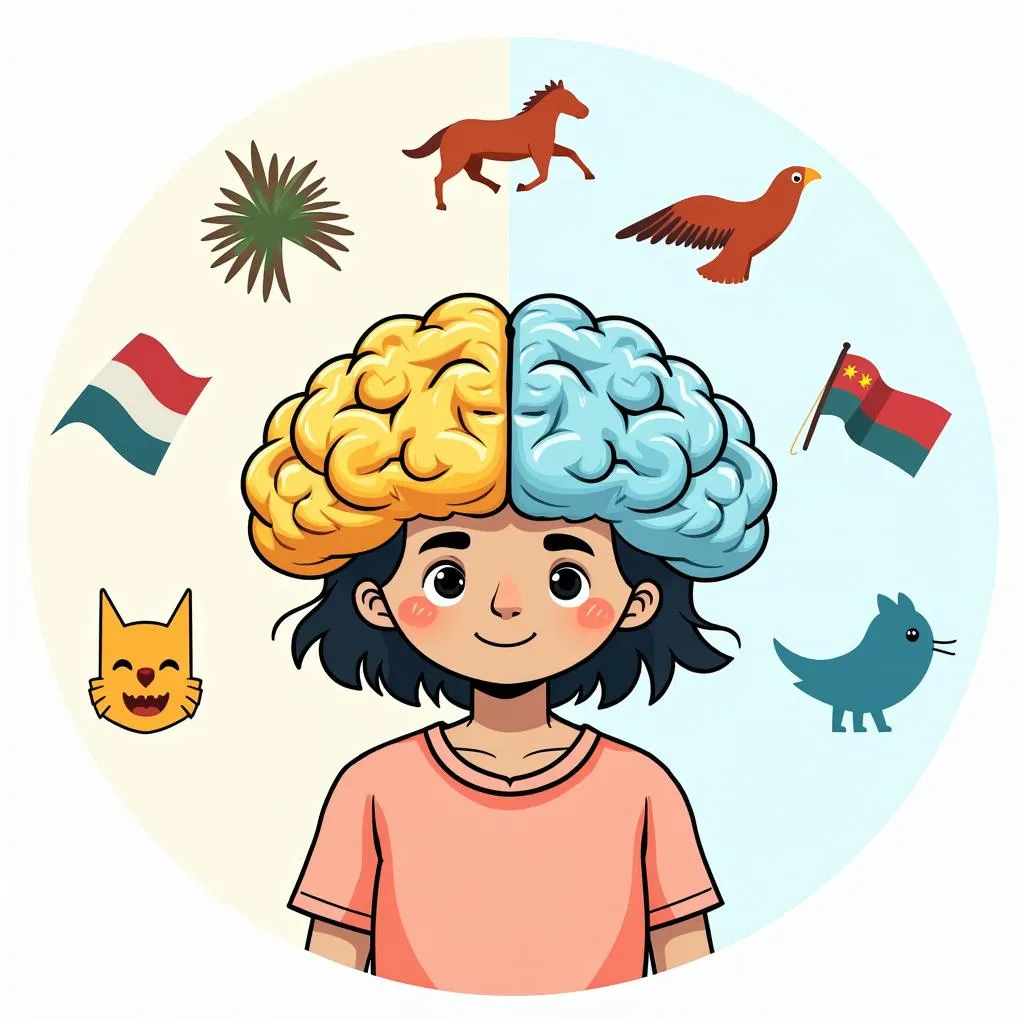The Influence of Language Clubs on Student Self-Confidence: A Comprehensive IELTS Reading Test
Language clubs play a crucial role in developing students’ linguistic abilities and self-assurance. This IELTS Reading practice test explores the impact of these clubs on student confidence, providing an opportunity to hone your reading skills while learning about this fascinating topic. How international students adapt to different cultural environments is often facilitated by such language clubs, making this test particularly relevant for those preparing for study abroad.
Nội dung bài viết
- The Influence of Language Clubs on Student Self-Confidence: A Comprehensive IELTS Reading Test
- Passage 1 – Easy Text
- The Rise of Language Clubs in Educational Institutions
- Questions 1-5
- Questions 6-10
- Passage 2 – Medium Text
- The Psychological Impact of Language Clubs on Student Confidence
- Questions 11-15
- Questions 16-20
- Passage 3 – Hard Text
- The Synergistic Effect of Language Clubs on Cognitive Development and Cultural Intelligence
- Questions 21-26
- Questions 27-30
- Answer Key
- Passage 1
- Passage 2
- Passage 3
Let’s dive into the three passages, each followed by a set of questions to test your comprehension and analytical skills.
Passage 1 – Easy Text
The Rise of Language Clubs in Educational Institutions
Language clubs have become increasingly popular in schools and universities worldwide. These extracurricular groups offer students a unique platform to practice and improve their language skills in a relaxed, social setting. Unlike traditional classroom environments, language clubs provide a more informal atmosphere where learners can engage in conversations, cultural activities, and language games without the pressure of grades or formal assessments.
The primary objective of these clubs is to create a supportive community where students can build confidence in using a foreign language. By participating in regular meetings and events, members have the opportunity to practice speaking, listening, and even writing in their target language. This consistent exposure and practice are crucial for language acquisition and fluency development.
Many language clubs organize a variety of activities to keep members engaged and motivated. These may include conversation circles, where students discuss topics in small groups, cultural presentations about countries where the target language is spoken, and language exchange partnerships with native speakers. Some clubs even arrange movie nights featuring films in the target language, cooking classes for traditional dishes, or field trips to cultural events and exhibitions.
One of the key benefits of language clubs is the peer-to-peer learning environment they foster. Students at different proficiency levels can interact, allowing beginners to learn from more advanced speakers and giving experienced learners the chance to reinforce their skills by helping others. This collaborative approach not only enhances language skills but also promotes cross-cultural understanding and fosters lasting friendships.
 Language club activities enhancing student confidence
Language club activities enhancing student confidence
Questions 1-5
Do the following statements agree with the information given in the passage? Write
TRUE if the statement agrees with the information
FALSE if the statement contradicts the information
NOT GIVEN if there is no information on this
- Language clubs are becoming more common in educational institutions.
- The atmosphere in language clubs is more relaxed than in traditional classrooms.
- Language club members are required to take formal assessments.
- Cultural presentations are a common activity in language clubs.
- All language clubs organize field trips to other countries.
Questions 6-10
Complete the sentences below. Choose NO MORE THAN TWO WORDS from the passage for each answer.
- Language clubs aim to create a __ community for language learners.
- Regular participation in club activities helps develop language __ and fluency.
- Some clubs arrange __ with native speakers of the target language.
- The __ learning environment in language clubs allows students of different levels to interact.
- Language clubs not only improve language skills but also promote __ understanding.
Passage 2 – Medium Text
The Psychological Impact of Language Clubs on Student Confidence
The correlation between participation in language clubs and increased self-confidence among students has been a subject of growing interest in educational psychology. Research suggests that these extracurricular groups provide a unique environment that fosters self-assurance and linguistic competence simultaneously. The multifaceted benefits of language clubs extend beyond mere language acquisition, influencing students’ overall personal development and academic performance.
One of the primary psychological advantages of language club participation is the reduction of language anxiety. In traditional classroom settings, many students experience apprehension when required to speak in a foreign language, fearing judgment or ridicule for their mistakes. Language clubs, however, create a more supportive and less evaluative atmosphere. This low-stakes environment allows learners to take risks, make errors, and learn from them without the fear of academic repercussions. As a result, students gradually build confidence in their ability to communicate in the target language.
Moreover, language clubs often employ a variety of interactive activities that cater to different learning styles and preferences. This inclusivity ensures that all participants can find activities that resonate with their strengths, further boosting their self-esteem. For instance, students who excel in visual learning might thrive during poster presentations or film discussions, while those with strong interpersonal skills might shine in debate clubs or conversation circles. By providing diverse opportunities for success, language clubs help students recognize and appreciate their unique abilities.
The sense of community fostered within language clubs also plays a crucial role in enhancing student confidence. As members collaborate on projects, share cultural insights, and support each other’s learning journeys, they develop a sense of belonging and mutual respect. This social cohesion not only makes the learning process more enjoyable but also creates a network of peer support that extends beyond the club meetings. Students often report feeling more confident in their general social interactions as a result of the interpersonal skills honed through language club participation.
Furthermore, language clubs frequently organize events or competitions that allow students to showcase their progress and talents. These occasions provide tangible milestones for learners to measure their improvement and receive recognition for their efforts. Whether it’s participating in a language contest, performing in a cultural show, or presenting at a club-organized conference, these experiences offer valuable opportunities for students to step out of their comfort zones and demonstrate their capabilities to a wider audience.
 Language club boosting student confidence
Language club boosting student confidence
The positive impact of language clubs on student confidence often translates into improved academic performance and increased motivation to pursue language studies further. As students become more comfortable expressing themselves in the target language, they typically show enhanced participation in regular language classes and achieve better grades. This success further reinforces their confidence, creating a positive feedback loop that can lead to long-term language proficiency and personal growth.
Questions 11-15
Choose the correct letter, A, B, C, or D.
-
According to the passage, language clubs:
A) focus solely on language acquisition
B) have no impact on academic performance
C) benefit students’ personal development
D) are mandatory in most schools -
The “low-stakes environment” of language clubs helps students:
A) avoid making any mistakes
B) feel less anxious about speaking
C) compete with each other
D) focus only on grammar rules -
Language clubs cater to different learning styles by:
A) separating students based on their abilities
B) focusing only on verbal communication
C) offering a variety of activities
D) providing individual tutoring -
The sense of community in language clubs:
A) is limited to club meetings
B) only benefits extroverted students
C) extends to general social interactions
D) decreases over time -
Participating in language club events:
A) is mandatory for all members
B) only benefits advanced learners
C) provides opportunities to demonstrate skills
D) focuses solely on written competitions
Questions 16-20
Complete the summary below. Choose NO MORE THAN TWO WORDS from the passage for each answer.
Language clubs offer numerous psychological benefits to students, including reduced (16) __ and increased self-confidence. The supportive atmosphere allows learners to take risks without fear of (17) __. These clubs provide (18) __ for success through various activities, helping students appreciate their unique abilities. The (19) __ developed in these clubs extends beyond meetings, improving overall social interactions. Events organized by clubs offer (20) __ for students to measure their progress and gain recognition.
Passage 3 – Hard Text
The Synergistic Effect of Language Clubs on Cognitive Development and Cultural Intelligence
The proliferation of language clubs in educational institutions has not only revolutionized the landscape of language learning but has also precipitated a paradigm shift in our understanding of cognitive development and cultural intelligence. These extracurricular entities serve as catalysts for a multifaceted transformation in students’ intellectual and social capacities, extending far beyond the realm of linguistic proficiency. The symbiotic relationship between language acquisition, cognitive enhancement, and cultural acumen fostered within these clubs presents a compelling case for their integration into comprehensive educational strategies.
At the neurological level, participation in language clubs stimulates cognitive processes that are fundamental to language acquisition and broader intellectual development. The brain’s plasticity is significantly enhanced through the diverse linguistic interactions and cultural exposures facilitated by these clubs. This neuroplasticity not only accelerates language learning but also improves executive functions such as attention control, cognitive flexibility, and working memory. Research in neurolinguistics suggests that the multilingual environment of language clubs activates and strengthens neural pathways associated with language processing, problem-solving, and creative thinking.
Moreover, the immersive and interactive nature of language club activities contributes to the development of metalinguistic awareness – the ability to reflect on and manipulate the structural features of language. This heightened linguistic consciousness transcends the boundaries of the target language, enhancing students’ analytical skills in their native language as well. The comparative analysis of linguistic structures, idioms, and cultural nuances inherent in language club discussions fosters a deeper understanding of language as a system, thereby refining students’ overall communicative competence.
The cultural intelligence quotient (CQ), a critical skill in our increasingly globalized world, is significantly bolstered through language club participation. Beyond mere exposure to cultural facts, these clubs provide a platform for experiential learning of cultural norms, values, and perspectives. Through role-playing exercises, cultural simulations, and interactions with native speakers, students develop the ability to navigate complex intercultural situations with empathy and adaptability. This enhanced CQ not only facilitates more effective communication in the target language but also equips students with invaluable skills for future international careers or cross-cultural collaborations.
Furthermore, language clubs serve as incubators for the development of transversal skills – those competencies that are transferable across various domains and crucial for success in the 21st-century workforce. Critical thinking, teamwork, leadership, and digital literacy are inherently fostered through the collaborative projects, debates, and technology-enhanced activities common in language clubs. The self-directed nature of many club activities also cultivates autonomy and metacognitive skills, as students learn to set goals, monitor their progress, and reflect on their learning strategies.
 Cognitive and cultural benefits of language clubs
Cognitive and cultural benefits of language clubs
The impact of language clubs extends into the realm of intercultural competence, a construct that encompasses cognitive, affective, and behavioral dimensions of cross-cultural interactions. Through sustained engagement with diverse perspectives and cultural practices, students develop not only knowledge of other cultures but also the emotional intelligence to empathize with different worldviews. This affective component of intercultural competence is particularly crucial in fostering global citizenship and reducing ethnocentrism.
In conclusion, the holistic benefits of language clubs in cognitive development and cultural intelligence underscore their significance as powerful educational tools. As educational institutions strive to prepare students for a complex, interconnected world, the integration of language clubs into broader academic curricula emerges as an imperative strategy. By fostering an environment that simultaneously enhances linguistic skills, cognitive abilities, and cultural acumen, language clubs play a pivotal role in shaping well-rounded, globally competent individuals poised to thrive in diverse and dynamic contexts.
Questions 21-26
Choose the correct letter, A, B, C, or D.
-
According to the passage, language clubs:
A) focus solely on improving linguistic skills
B) have a limited impact on cognitive development
C) enhance both cognitive and cultural intelligence
D) are only beneficial for advanced language learners -
The term “brain’s plasticity” in the context of the passage refers to:
A) the physical structure of the brain
B) the brain’s ability to adapt and change
C) a specific region of the brain responsible for language
D) the brain’s capacity to store vocabulary -
Metalinguistic awareness developed through language clubs:
A) is limited to the target language being studied
B) decreases students’ proficiency in their native language
C) improves overall communicative competence
D) only benefits bilingual students -
The cultural intelligence quotient (CQ) is described as:
A) a measure of factual knowledge about different cultures
B) the ability to speak multiple languages fluently
C) a skill for navigating intercultural situations effectively
D) an innate trait that cannot be developed -
Transversal skills mentioned in the passage include:
A) specific technical skills for certain professions
B) skills that are only applicable in language learning
C) competencies transferable across various domains
D) abilities that are innate and cannot be learned -
The passage suggests that intercultural competence:
A) is solely a cognitive skill
B) encompasses cognitive, affective, and behavioral aspects
C) is less important than linguistic proficiency
D) can only be developed through formal education
Questions 27-30
Complete the summary below. Choose NO MORE THAN THREE WORDS from the passage for each answer.
Language clubs facilitate a (27) __ in students’ intellectual and social capacities. They enhance the brain’s plasticity, which not only accelerates language learning but also improves (28) __ such as attention control and cognitive flexibility. These clubs provide a platform for (29) __ of cultural norms and values, contributing to the development of cultural intelligence. Additionally, language clubs foster (30) __, which are essential for success in the modern workforce and global interactions.
Answer Key
Passage 1
- TRUE
- TRUE
- FALSE
- TRUE
- NOT GIVEN
- supportive
- acquisition
- language exchange partnerships
- peer-to-peer
- cross-cultural
Passage 2
- C
- B
- C
- C
- C
- language anxiety
- academic repercussions
- diverse opportunities
- sense of community
- tangible milestones
Passage 3
- C
- B
- C
- C
- C
- B
- multifaceted transformation
- executive functions
- experiential learning
- transversal skills
This comprehensive IELTS Reading practice test on “The Influence of Language Clubs on Student Self-Confidence” provides valuable insights into the multifaceted benefits of language club participation. As you prepare for your IELTS exam, remember that understanding complex texts and answering various question types are crucial skills. How international students adapt to different cultural environments is often facilitated by experiences similar to those gained in language clubs, making this topic particularly relevant for IELTS candidates. Continue practicing with diverse texts to enhance your reading comprehension and test-taking strategies.
